“My job allows me to read about strange incidents, but what I see here is often even stranger. And the strangest thing of all happened one day after midday prayer.” باب الحديد [Bab el-Hadid / Cairo Station / The Iron Gate] (Youssef Chahine, 1958)
Jul
8
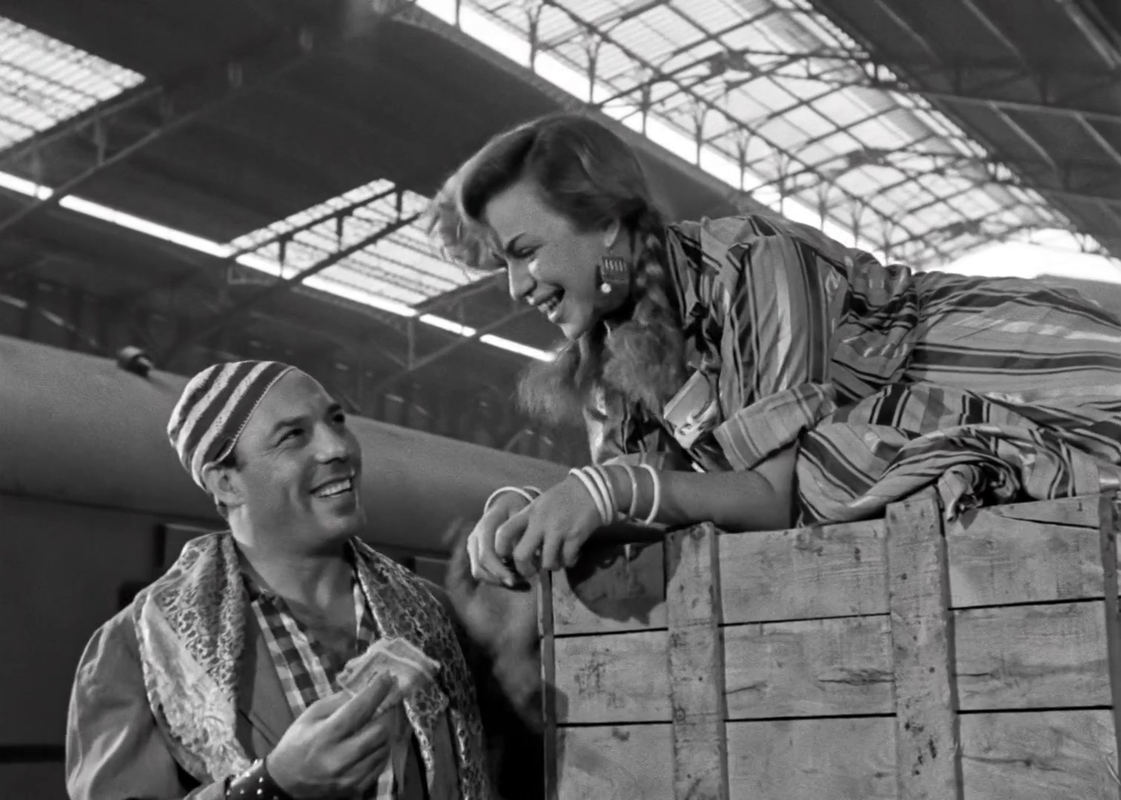
Abu-Sri (Farid Shawqi) with Hannumah (Hind Rostom) perched on top of a large wooden crate. DP: Alevise Orfanelli.
Luggage, a trunk, or a suitcase*
– Madbouli, newspaper salesman
Among the hustle and bustle of Cairo's travellers, there are those making a living. The pitiful Qenawi (Youssef Chahine) peddles newspapers, unioniser Abu-Sri moves said travellers' luggage, and Hannumah (Hind Rostom), all hips and bosom and Abu-Sri's, sells cold drinks. Qenawi wants her.
* the Bales 2025 Film Challenge for July is, for unknown reasons, mostly not date-related and follows some sort of vacation narrative.
bales2025filmchallenge
“Mr. Hulot is off for a week by the sea. Take a seat behind his camera, and you can spend it with him. Don't look for a plot, for a holiday is meant purely for fun, and if you look for it, you will find more fun in ordinary life than in fiction.” Les vacances de Monsieur Hulot [Monsieur Hulot's Holiday] (Jacques Tati, 1953)
Jul
7
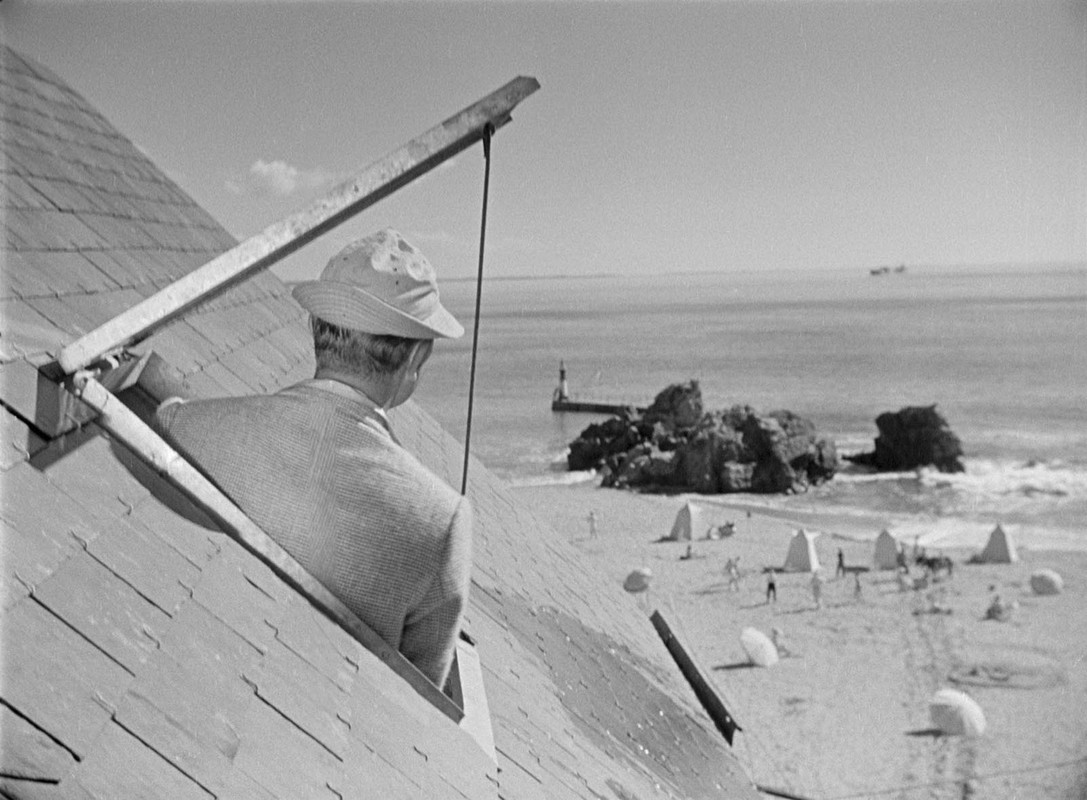
Mr Hulot's view from his hotel room. DPs: Jacques Mercanton & Jean Mousselle.
A film with people at, or taking place in, a hotel*
– opening lines
Located in the real-world Hôtel de la Plage in Saint-Marc-sur-Mer, Mr Hulot lovingly bumbles his way into your heart.
* the Bales 2025 Film Challenge for July is, for unknown reasons, mostly not date-related and follows some sort of vacation narrative.
Die endlose Nacht [The Endless Night] (Will Tremper, 1963)
Jul
6

The bold and the beautiful stuck at Tempelhof. And yes, one could smoke there. DP: Hans Jura.
(People at) an airport*
It's foggy at Flughafen Berlin-Tempelhof, the Allies' airbridge to the West, and all the planes into and out of West Berlin are grounded. In any other metropolis this could mean taking a train, enjoy the city's nightlife or maybe just a bed for the night. In post-Wall bureaucracy-happy West Berlin, this means endless waits with strangers. And so, with nowhere to go, a Polish jazz band mingles with British spouses, a lonely South African farmer, a model and her beau.
* the Bales 2025 Film Challenge for July is, for unknown reasons, mostly not date-related and follows some sort of vacation narrative.
“It appears obvious that the territory is the sum of all the maps, the result of an infinite addition. Or a contrary, the territory is what is left when we remove all the sets of lines, drawings, traces and colors which are covering it. Its existence becomes doubtful.” Zig-Zag – le jeu de l'oie (Une fiction didactique à propos de la cartographie) [Snakes and Ladders] (Raúl Ruiz, 1980)
Jul
5
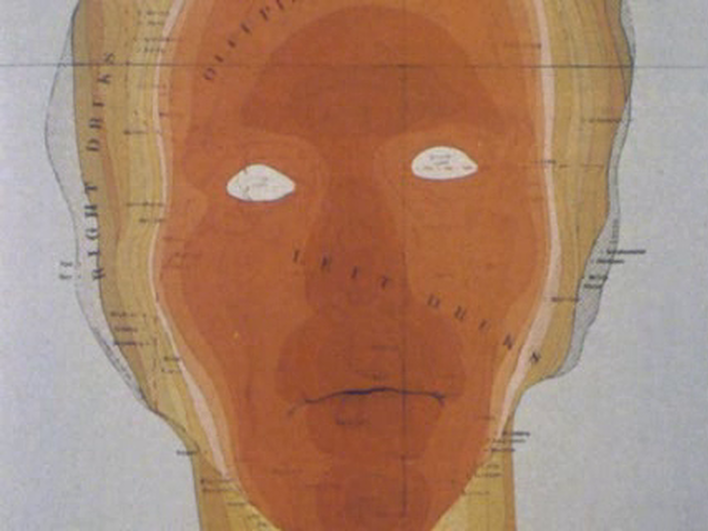
An anthropomorphic map with contour lines sketching out a man's head (via). DP: Alain Montrobert.
Traveling to my vacation destination, a map or globe*
– H., via
A man, H., joins two others playing jeu de l'oie (Game of the Goose), a board game associated with labyrinths and pilgrimage. While the three play, the game opens up maps and new roads to explore.
Following my own Bales' rules, I cannot pick a title twice. See Zig-Zag as an avatar of Raúl Ruiz's O Território [The Territory] from 1981.
* the Bales 2025 Film Challenge for July is, for unknown reasons, mostly not date-related and follows some sort of vacation narrative.
“This film tells a story of rebels (played by real rats) and cops (played by real cats). After a long domination by cats, the rats escape from prison (this is their rebellion) and find refuge in Canada. There, they feed on organic produce from a garden where the grass hasn’t been sprayed with DDT.” Rat Life and Diet in North America (Joyce Wieland, 1968)
Jul
4
Independence Day
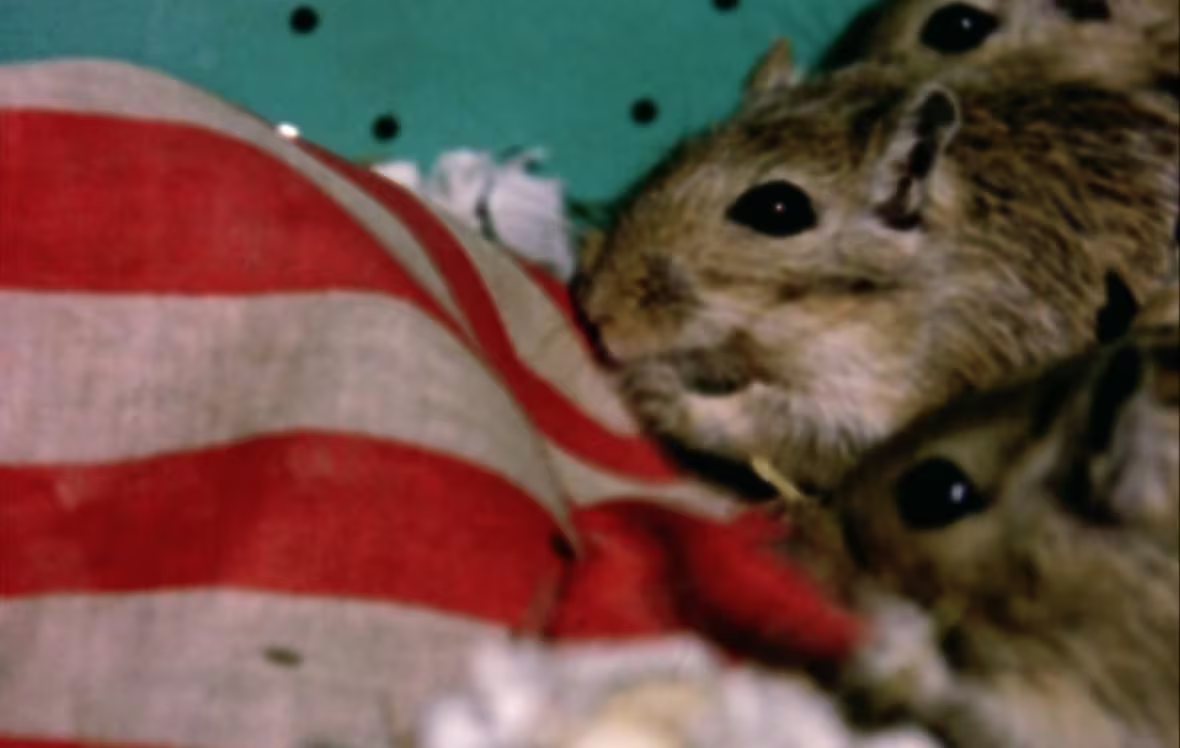
Rats – gerbils actually – nibbling on the Stars and Stripes (via). DP: Joyce Wieland.
A movie set in the USA for Independence Day (USA)
– Jonas Mekas, via
French-Canadian patriot Joyce Wieland tells a fable of freedom.
Coincidentally, the Canadian city of Trois-Rivières, scene of the final battle of the American Revolutionary War, also celebrates an Independence Day on the fourth of July.
“What I sought in 'Pacific' was not the imitation of the sounds of the locomotive, but the translation of a visual impression and a physical enjoyment through a musical construction. It starts from objective contemplation: the quiet breathing of the engine at rest, the effort of starting, then the progressive increase in speed, to arrive at the lyrical state, the pathos of the 300-ton train, launched in the middle of the night at 120 km/h.” Пасифик 231 [Pasifik 231 / Pacific 231] (Mikhail Tsekhanovskiy, 1931)
Jul
2

Musicians superimposed over the locomotive's pistons. DP: Leonid Patlis.
A mode of transportation to get me to my ideal vacation destination*. And yes, I would travel to an island by transcontinental locomotive
– Arthur Honegger, Dissonances. Revue musicale indépendante (1925) (via)
Hinted on in Abel Gance's La Roue (1923), composer Arthur Honegger's Пасифик 231 follows the narrative of a stream train ploughing through the night. The conductor's gestures mirror the fireman's and slowly, the machine comes to live. The music becomes abstract, machine-like, in its rendition of pistons and valves. Using double exposure and Soviet montage theory, music and movement become one. The Futurists, if not opposed to the Soviets that is, would have had a field day with this outing.
* the Bales 2025 Film Challenge for July is, for unknown reasons, mostly not date-related and follows some sort of vacation narrative.
Il mare [The Sea] (Giuseppe Patroni Griffi, 1962)
Jul
1

The actor (Umberto Orsini) looking out over the island. The claustrophobic framing of the hotel windows contrasts sharply with the openness of the sea. DP: Ennio Guarnieri.
My ideal vacation spot, country, city, town, or resort*
An island, in this case Capri (granted I've never been there), off-season, in a space and time lost in the mists. It'll occasionally rain and it's cold enough to dress up.
* the Bales 2025 Film Challenge for July is, for unknown reasons, mostly not date-related and follows some sort of vacation narrative.
“But this art of total synthesis that is Cinema, this fabulous newborn of Machine and Sentiment, is beginning to cease its moans and is entering its infancy. Its adolescence will soon arrive, seize its intelligence, and multiply its dreams; we ask that we hasten its development, precipitate the advent of its youth. We need Cinema to create the total art toward which the other arts have always tended.“Combat de boxe (Charles Dekeukeleire, 1927)
Jun
30
Mike Tyson – 1966
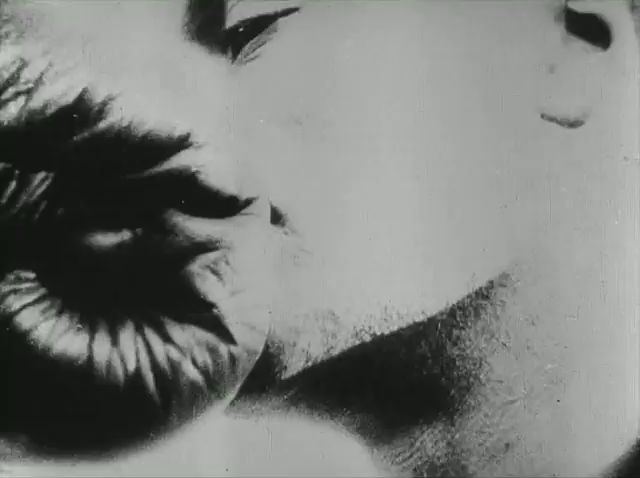
One of the fighters receives a direct hit. The camera is so close that we see abstract shapes, texture and contrast before recognising the scene. DP: Antoine Castille.
A [favourite] athlete in a film role for Mike Tyson's birthday
– Ricciotto Canudo, Gazette des sept arts, 1923 (via)
The match you see is real, between two actual fighters. Paul Werrie's rhythmic poem served as the basis. Everything else is illusion made flesh with what was available. An empty painter's studio, a few friends, footage of a crowd, a deep comprehension of the Kuleshov effect and rapid Soviet-style editing. Dekeukeleire places us from the safe world of the spectator right in the line of fire. But there's no release like in James Williamson's The Big Swallow (1901). Without that gimmick, cinema enters Canudo's realm, as the seventh art.
“We Malays, we Filipinos, are not governed by the concept of time. We are governed by the concept of space. We don't believe in time. If you live in the country, you see Filipinos hang out. They are not very productive. That is very Malay. It is all about space and nature. [...] In the Philippine archipelago, nature provided everything, until the concept of property came with the Spanish colonizers. Then the capitalist order took control. [...] The concept of time was introduced to us when the Spaniards came. We had to do oracion [pray] at six o'clock, and start work at seven. Before it was free, it was Malay.”Florentina Hubaldo, CTE (Lav Diaz, 2012)
Jul
29
International Day of the Tropics

A small river in the outskirts of the jungle. A young woman sits in the water cradling an older woman, like a Pietà. A man, in the same water, is slumped in a wooden chair. A third woman is standing there, looking at us, her head slightly tilted. DP: Lav Diaz.
A film set in a tropical location for the International Day of the Tropics
– Lav Diaz, via
– Why do you always wear those dark glasses? – A souvenir of unrequited love for my homeland.Popiół i diament [Ashes and Diamonds] (Andrzej Wajda, 1958)
Jun
27
National Sunglasses Day
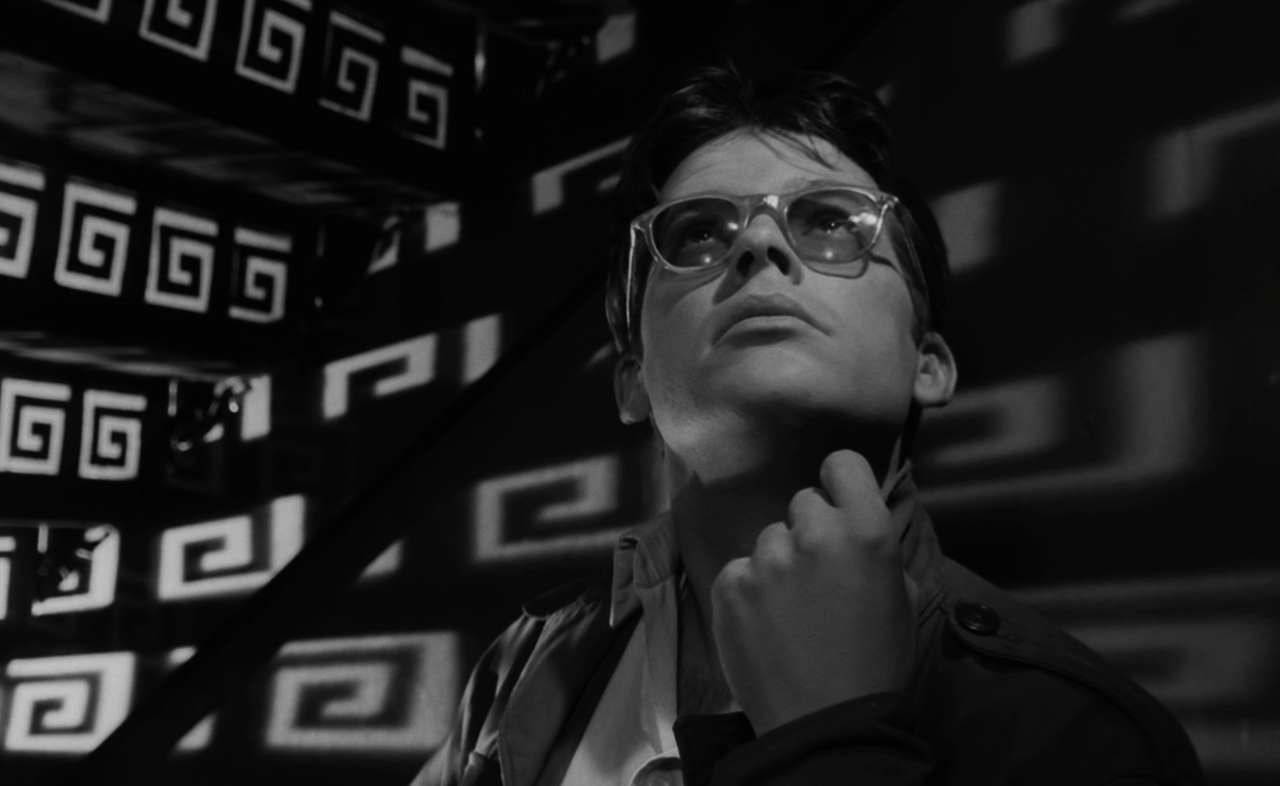
Maciek Chelmicki (Zbigniew Cybulski) wearing his sunglasses in a dark, almost German Expressionist space, embellished with meandros. DP: Jerzy Wójcik.
[The best] sunglasses in film for National Sunglasses Day (USA)
According to IMDb, the sale of sunglasses in Poland went through the roof after this film was released and Cybulski became his country's very own James Dean.